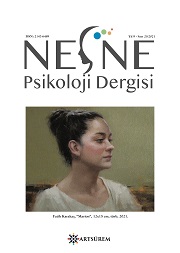Geştalt Kuramı’nın Problem Çözme Üzerine Çalışmaları ve Günümüzün Geştaltı
Gestalt Research on Problem Solving and Today’s Gestalt
Author(s): Esra MunganSubject(s): Social psychology and group interaction, Cognitive Psychology, Behaviorism
Published by: Sanat ve Dil Araştırmaları Enstitüsü
Keywords: Gestalt Theory; productive thinking; problem solving;
Summary/Abstract: This article will focus on two pioneering scientific work on problem solving, or per Gestalt Theory, “productive thinking”. One of them is Köhler’s research on goal-directed tool use and overcoming obstacles in chimpanzees, the other one is Duncker’s studies on problem solving using a “think aloud” technique. In both Köhler’s and Duncker’s work, productive thinking is linked to a restructuring behavior. For example, tearing off a thin and long branch from a tree to serve as a stick or removing the various objects in a matchbox to transform it from a container to a platform on which to mount a candle are examples of such restructuring. In the final section, I will look at how today’s research trends might and should connect to Gestalt Theory. In conclusion, just as in memory, the two main proposals of Gestalt Theory, i.e., figure-ground separation and grouping in figures play a critical role also in thinking. Thus, Gestalt Theory seems to be able to come up with a common way of understanding perception, memory, as well as thinking. To our knowledge there is no other single theory within cognitive psychology that has such broad an explanatory power. This in itself is one more reason why Gestalt Theory in large deserves crucial attention.
Journal: Nesne-Psikoloji Dergisi
- Issue Year: 9/2021
- Issue No: 20
- Page Range: 354-378
- Page Count: 25
- Language: Turkish

